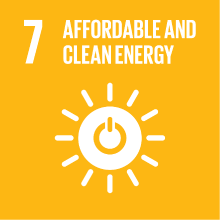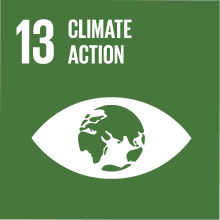NANOMATERIALS CHEMISTRY AND LABORATORY
- Academic year
- 2021/2022 Syllabus of previous years
- Official course title
- NANOMATERIALS CHEMISTRY AND LABORATORY
- Course code
- CM1309 (AF:355477 AR:186335)
- Teaching language
- English
- Modality
- On campus classes
- ECTS credits
- 6
- Degree level
- Master's Degree Programme (DM270)
- Academic Discipline
- CHIM/03
- Period
- 2nd Semester
- Course year
- 1
- Moodle
- Go to Moodle page
Contribution of the course to the overall degree programme goals
The course aims to develop skills that allow the students to apply many types of inorganic nanomaterials in different fields, among which the biomedical one (diagnostics, drug delivery, targeting, gene therapy) and for sustainable energy conversion (catalysis/photocatalysis).
Students will be able to analyse and understand complex scientific issues concerning the nanomaterials science in all its aspects, critically identifying advantages and limits, also from an applicative perspective.
To achieve these objectives, a number of laboratory sessions with the use of advanced methodologies and technologies are planned within the course, allowing students to transfer the knowledge acquired during the theoretical lessons into application areas and allowing them to develop unique and specific skills in the design and manipulation of compounds at the nanoscale.
Expected learning outcomes
I) Being able to demonstrate a comprehensive knowledge and understanding of the current state-of-the-art in nanomaterials chemistry.
II) Being able to evaluate the difference between bulk and nanosized materials.
III) Understanding the existing relationships between the electronic structure of a nanomaterial and the quantum size effect.
IV) Knowledge the difference between chemical synthetic approaches (bottom-up) and physical ones (top-down) for the preparation of nanomaterials.
V) Being able to control and tune the synthesis process of nanomaterials to obtain nanostructures with specific size and morphology, and therefore controlled structural, optical and functional properties.
VI) Knowledge the synthesis methodologies based on the use of soft and hard templates to control and tune nanomaterials’ porosity, specific surface area and morphology.
2. Ability to apply knowledge and understanding.
I) Being able to use the concepts learned to foresee and logically interpret the chemical-physical, electrical and optical properties of an inorganic nanomaterial.
II) Being able to propose coherent and feasible technological applications of inorganic nanomaterials in the biomedical, pharmaceutical, industrial, energy fields.
III) Demonstrate skills in nanomaterials experimentation, problem solving and interpretation of new data.
3. Ability to judge.
I) Being able to use the acquired knowledge to evaluate which synthesis methods that can be best suited for fabricating nanostructured inorganic materials (metals, semiconductors, oxides).
II) Being able to evaluate the fields of application of inorganic nanoscale materials.
III) Consider the potential risks to human health from exposure to nanomaterials.
4. Communication skills
I) Being able to use the appropriate scientific-technical terminology and symbology, both verbally and in written form, to discuss the course contents.
II) Being able to interact constructively with the teacher and with the other students.
5. Learning skills
I) Being able to synthesize in an autonomous way the salient aspects of the concepts expressed in class.
II) Being able to make logical connections between the topics of the course.
Pre-requirements
Contents
I) Nanomaterials: definition and peculiarities.
II) Study of selected synthetic approaches of chemical (bottom-up) type.
III) Methods for the synthesis of inorganic nanoparticles (mainly silica and titania) of appropriate morphology, porosity and size, through the use of the sol-gel process.
IV) Sol-gel process: influence of the synthesis parameters (pH, temperature, nature of the precursor, polarity of the solvent, etc ...) on the final product.
V) Classification of soft surfactants. Direct and inverse micelles. Emulsions and microemulsions.
VI) Supramolecular aggregates, classification of porosity, materials with ordered mesoporosity and their use for the preparation of nano- and bio-materials.
VII) Synthesis and application of direct and inverse opals as photonic crystals.
VIII) Use of silica in the biomedical field.
XI) Nanoparticles: shape, size, composition.
X) Colloidal systems.
XI) Au nanoparticles: history, properties.
XII) Synthesis and modulation of the synthetic parameters for the obtainment of nano-spheres, -rods, -shells, -cages, core-shell systems.
XIII) Use of metallic nanoparticles in the biomedical field (photothermal therapy, imaging, etc ...).
XIV) Biological and bioethical aspects of the effects of nanoparticles on the environment and human health.
The experiences carried out in the laboratory are as follows:
I) synthesis of ordered mesoporous silica spheres by the use of soft surfactants; synthesis of gold nanoparticles with different methodologies and sizes; preparation of direct opals of PMMA and inverse opals of silica.
II) physico-chemical and optical characterization of the synthesized materials by means of porosity measurements for gas physisorption (surface area, total volume and pore distribution); infrared spectroscopy in diffuse reflectance (DRIFT-IR); UV-vis spectroscopy in diffuse reflectance (DRIFT-UV-vis); and scanning electron microscopy (SEM).
Referral texts
- Educational material (Pdf lecture notes provided by the teacher).
- Instructions of the lab experiments provided by the teacher.
- Selected scientific articles provided by the teacher.
- "Bio- and Bioinspired Nanomaterials" - Daniel Ruiz-Molina, Fernando Novio, Claudio Roscini; 2015 Wiley-VCH Verlag GmbH & Co. KGaA.
- Gold Nanoparticles for Physics, Chemistry and Biology" 2nd Edition - Catherine Louis, Olivier Pluchery; 2017, World Scientific.
- “Nanostructures & Nanomaterials - Synthesis, Properties & Applications” - G. Cao, Imperial College Press 2004.
- “Optical properties and Spectroscopy of Nanomaterials” - J.Z. Zhang, Ed. World Scientific 2009.
- “Optical properties of Nanoparticle Systems” - M. Quinten. Ed., WILEY-VCH 2011.
Assessment methods
Type of exam
Teaching methods
Further information
Accessibility, Disability and Inclusion.
Accommodation and support services for students with disabilities and students with specific learning impairments:
Ca’ Foscari abides by Italian Law (Law 17/1999; Law 170/2010) regarding support services and accommodation available to students with disabilities. This includes students with mobility, visual, hearing and other disabilities (Law 17/1999), and specific learning impairments (Law 170/2010). In the case of disability or impairment that requires accommodations (i.e., alternate testing, readers, note takers or interpreters) please contact the Disability and Accessibility Offices in Student Services: disabilita@unive.it.
2030 Agenda for Sustainable Development Goals
This subject deals with topics related to the macro-area "Climate change and energy" and contributes to the achievement of one or more goals of U. N. Agenda for Sustainable Development


